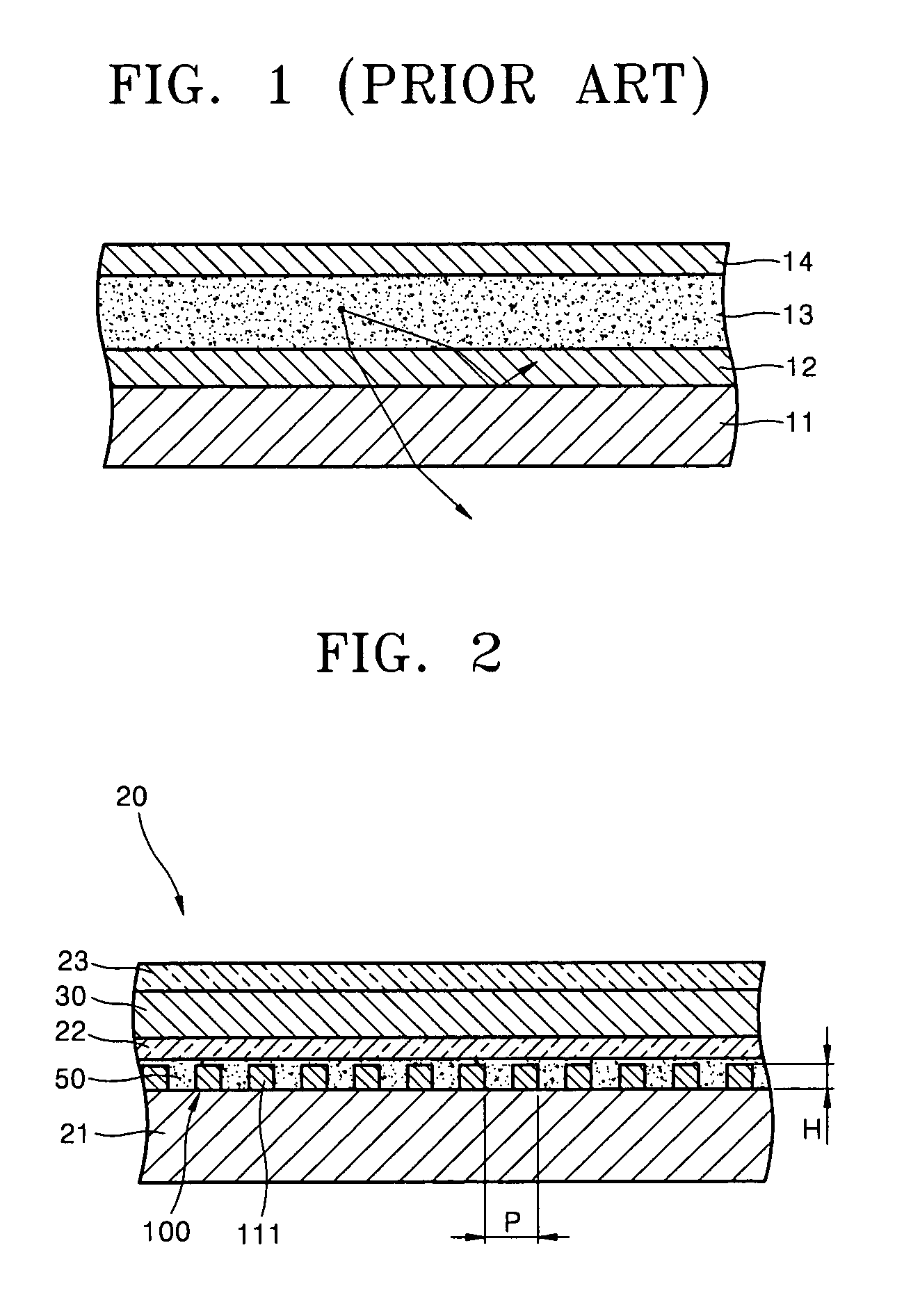Assembly of organic electroluminescence display device
a display device and organic technology, applied in the field of organic electroluminescence display devices, can solve the problems of increasing leakage current of organic el display devices, reducing durability and reliability, and complicated manufacturing process, so as to reduce internal optical loss, increase light bleeding efficiency, and increase the luminance of an image
- Summary
- Abstract
- Description
- Claims
- Application Information
AI Technical Summary
Benefits of technology
Problems solved by technology
Method used
Image
Examples
first experiment
[0066]The first experiment was performed on an organic EL display device in which an optical loss prevention layer having cylindrical protrusions was formed of SiO2, TiO2, and SiNx on the upper surface of a substrate. The pitch between adjacent protrusions was in the range of 200 nm to 2000 nm, and the height of each of the protrusions was in the range of 50 nm to 5000 nm.
[0067]A first electrode layer, an organic luminescent layer, and a second electrode layer were sequentially stacked on the upper surface of the resulting substrate and between the resulting substrate and a fine space layer. FIG. 13 is a graph of a measured optical efficiency versus the width of the gap of the fine space layer. FIG. 14 is a graph of optical efficiency versus the height of the cylindrical protrusions.
[0068]Through the first experiment, standardized optical energy values were calculated for different widths of the gap of the fine space layer using a Finite Difference Time Domain (FDTD) simulation. In ...
second experiment
[0072]The second experiment was performed on an organic EL display device in which an index layer was formed of TiO2 with a refractive index of 2.36 between the fine space layer and the first electrode layer under the same conditions as in the first experiment. FIG. 15 is a graph of optical efficiency versus the thickness of the index layer. Here, the gap of the fine space layer was 0, and the protrusions of the optical loss prevention layer were 400 nm high.
[0073]According to FIG. 15, when the thickness of the index layer was 50 nm, the optical efficiency increased by about 4 times and the amount of light bleeding increased by 47.1% compared to the organic EL display device of the first comparative experiment.
PUM
 Login to View More
Login to View More Abstract
Description
Claims
Application Information
 Login to View More
Login to View More - R&D
- Intellectual Property
- Life Sciences
- Materials
- Tech Scout
- Unparalleled Data Quality
- Higher Quality Content
- 60% Fewer Hallucinations
Browse by: Latest US Patents, China's latest patents, Technical Efficacy Thesaurus, Application Domain, Technology Topic, Popular Technical Reports.
© 2025 PatSnap. All rights reserved.Legal|Privacy policy|Modern Slavery Act Transparency Statement|Sitemap|About US| Contact US: help@patsnap.com



